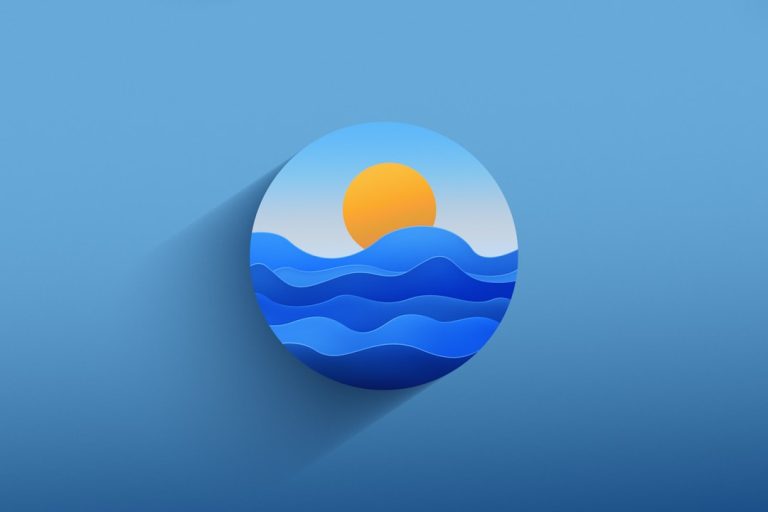My Personal Review of Focus Apps (which Ones Actually Work for Me)
In a world buzzing with notifications, endless feeds, and the constant hum of digital distractions, finding true focus can feel like searching for a needle in a haystack. I’ve been there, staring at a blank document, mindlessly refreshing social media, or getting lost down internet rabbit holes when I *should* have been working. This struggle led me on a years-long quest: to find focus apps that could genuinely help me reclaim my attention and boost my productivity. This isn’t a generic “best of” list; it’s a deeply personal account of my journey, detailing which apps actually clicked with my specific workflow, habits, and challenges, and more importantly, why they worked (or didn’t work) for me.
My Initial Forays into Focus Apps: The Ones That Missed the Mark for Me
My first attempts at leveraging focus apps were, frankly, hit or miss. Like many, I started with the most popular recommendations, hoping for a magic bullet. I downloaded several Pomodoro timers, intrigued by the idea of structured work and break intervals. While the underlying concept of the Pomodoro Technique is sound, many of the apps felt too rigid or overly gamified for my taste. Some had cute animations or growing virtual trees, which, paradoxically, became another minor distraction rather than a motivator.
Then there were the hardcore website blockers. I tried a few that promised to lock me out of distracting sites for set periods. The problem for me wasn’t their effectiveness – they worked almost *too* well. My work often requires quick, legitimate checks on social media for clients or rapid research that might brush against “blocked” categories. These apps often felt like using a sledgehammer to crack a nut, disrupting my legitimate workflow more than they streamlined it. I found myself fighting against the app, trying to find loopholes, which defeated the entire purpose. It taught me that my ideal solution needed flexibility, not just brute-force blocking.
Why Some Popular Choices Didn’t Stick with My Workflow
- Over-gamification: Apps that turned focus into a game sometimes felt like another form of digital entertainment rather than a serious tool. My brain craved the reward of completing a task, not watching a virtual tree grow.
- Lack of Customization: Many initial apps lacked the granular control I needed. I couldn’t easily whitelist specific subdomains or temporarily pause blocking for a legitimate work need without a full override, which felt like giving up.
- One-Size-Fits-All Approach: My work isn’t always linear. There are times for deep, uninterrupted work, and times for quick, context-switching tasks. Apps that only catered to one mode often fell short.
Unlocking My Concentration: The Apps That Truly Moved the Needle
After a period of trial and error, I started to understand my own focus patterns and what I truly needed. It wasn’t about completely eliminating distractions, but about managing them intelligently and creating an environment conducive to deep work. This is where certain apps truly began to shine for me. I discovered that a combination of proactive blocking, ambient sound, and mindful breaks worked best.
My Game-Changer: A Smarter Website Blocker with Flexibility
The first real breakthrough came with finding a website blocker that understood nuance. I landed on Freedom (available on macOS, Windows, iOS, Android). What made Freedom different for me was its robust customization. I could create specific “blocklists” for different activities (e.g., a “Deep Work” list blocking social media and news, and a “Research” list allowing specific news sites but blocking entertainment). Crucially, it offered a “locked mode” to prevent me from bypassing it during critical periods, but also a more flexible mode for when I needed to switch contexts quickly. It didn’t fight me; it empowered me to set my own boundaries. It became an indispensable tool for overcoming digital distractions.
- Personal Win: Its scheduling feature meant I could set blocks to automatically activate during my peak productivity hours, taking the decision-making out of my hands when willpower was low.
- Why it worked for me: Flexibility combined with strong enforcement options. It adapted to my dynamic work needs rather than imposing a rigid structure.
The Power of Ambient Sound: My Sonic Sanctuary
Another revelation was the impact of ambient sound. My home office isn’t always silent, and even small noises can pull me out of concentration. I explored various white noise and ambient sound apps. Endel (available on iOS, Android, macOS, Apple Watch, Amazon Alexa) stood out for its adaptive soundscapes. Instead of just static white noise, Endel generates personalized soundscapes based on my current state (focus, relax, sleep) and even time of day, heart rate, and weather. It sounds complex, but the effect is remarkably simple: a consistent, non-distracting audio background that helps me slip into a flow state.

- Personal Win: The “Focus” soundscape, particularly, helped mask environmental noise and provided a gentle, auditory anchor for my attention, leading to deeper, longer work sessions.
- Why it worked for me: It’s dynamic and non-repetitive, preventing “ear fatigue” that I experienced with simple static noise apps. It truly felt like a personalized sonic environment.
Beyond Basic Blocking: How Specific Features Shaped My Productivity Wins
My journey taught me that focus isn’t just about what you block out; it’s also about what you bring in and how you structure your time. I started looking for apps that offered more than just a single function, or those that excelled at a very specific, often overlooked, aspect of focus.
Structuring My Day: A Task Manager That Nudged, Not Nagged
While not strictly a “focus app” in the blocking sense, a good task manager is crucial for directing focus. I’ve tried many, from the simplest to the most complex. Todoist (available everywhere) became my go-to. Its power lies in its simplicity and natural language input, but what truly helped me focus was its ability to integrate with my calendar and its intelligent reminders. I could set recurring tasks, project-specific lists, and assign priority levels. This meant I spent less mental energy remembering what to do next and more energy actually doing it. It helped me create an effective time management technique.
- Personal Win: The “Upcoming” view, combined with due dates and priorities, gave me a clear, actionable roadmap for each day, allowing me to start tasks with immediate focus rather than dithering.
- Why it worked for me: It’s robust enough for complex projects but simple enough for daily tasks, without overwhelming me with unnecessary features. It served as a reliable external brain.
The Unsung Hero: My Digital Notebook for Unloading Mental Clutter
Distractions often come from within – stray thoughts, sudden ideas, or worries that pop into my head while I’m trying to concentrate. I found that having a quick, friction-free way to capture these thoughts was essential. Bear (macOS, iOS) became that app for me. Its clean interface, markdown support, and excellent search functionality allowed me to quickly jot down anything that threatened to derail my focus, knowing I could return to it later. It’s not a focus app in the traditional


